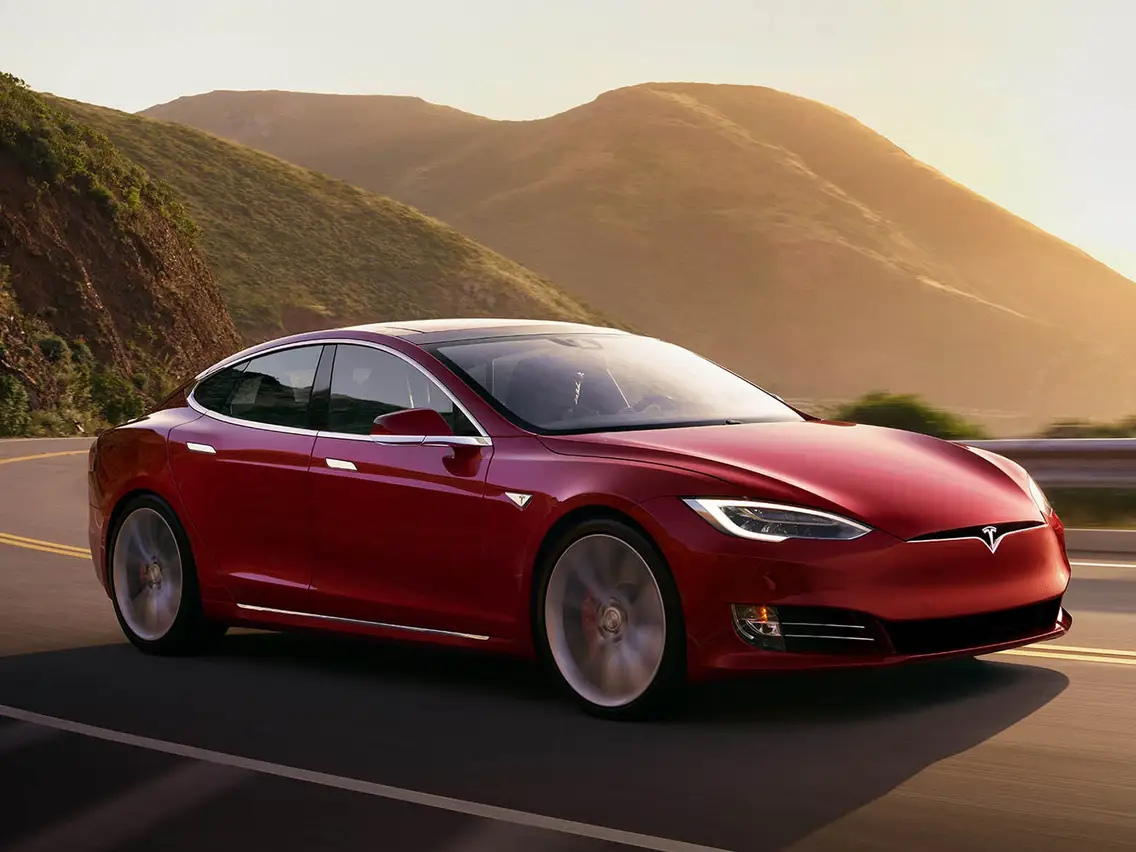

Tesla's Model S. Image credit: Tesla
Some Tesla cars are to begin monitoring driver awareness via cameras located above the rear-view mirror when the Autopilot driver-assistance feature is activated, as the company faces criticism over safety issues.
Critics have long urged the company to implement better driver-awareness monitoring features, and some have argued the existing monitoring measures can be easily fooled.
Autopilot currently monitors tension in the steering wheel to ensure the driver’s hands are placed there.
If it detects the driver’s hands are not on the wheel, it issues a series of escalating visual and audio warnings and can finally slow down and stop the vehicle.
But users have posted videos on social media of themselves tricking Autopilot into remaining active while they leave the driver’s seat.
Some other companies use internal sensors to observe the driver’s eyes, detecting when they look at their phone, for example.
Release notes on some new vehicles state that the Tesla cabin camera “can now detect and alert driver inattentiveness while Autopilot is engaged”.
“Camera data does not leave the car itself, which means the system cannot save or transmit information unless data sharing is enabled,” Tesla says in the release notes, which were reported by several media outlets and by users on social media.
A user said on Twitter that the steering-wheel alerts also remained active.
The camera feature appears to initially apply to Model 3 and Model Y vehicles.
Model S and Model X vehicles manufactured before 2021 do not have a cabin camera, but redesigned versions of those models announced in January are expected to include the device.
Tesla is also facing safety criticism over updates that temporarily remove radar-based features.
The company said last week it would begin transitioning its cars’ Autopilot features to use cameras and artificial intelligence rather than radar.
Tesla chief executive Elon Musk has in the past said he believes the radar and lidar systems used by rival self-driving technologies from the likes of GM Cruise and Alphabet’s Waymo are overly expensive and unnecessary.
Tesla said the move meant some key features would be “temporarily limited or inactive”, and would be “restored” in the coming weeks through software updates.
The Insurance Institute for Highway Safety and influential consumer magazine Consumer Reports both said they would remove safety recommendations due to the missing radar.
Russian court finds Google liable for YouTube video allegedly disclosing personal data on Russian casualties…
Latest CATL sodium-ion batteries have energy density and range closer to lithium-ion units using cheap…
Amazon's AWS cloud unit pauses some leasing talks around new data centres, analysts say, in…
US trade regulator says Uber signed users up for Uber One plan without their knowledge,…
Appeals court ruling reopens case that had been dismissed, finding Shopify must face trial under…
US Justice Department lawyers argue Google must face wide-ranging remedies including selling off Chrome, with…